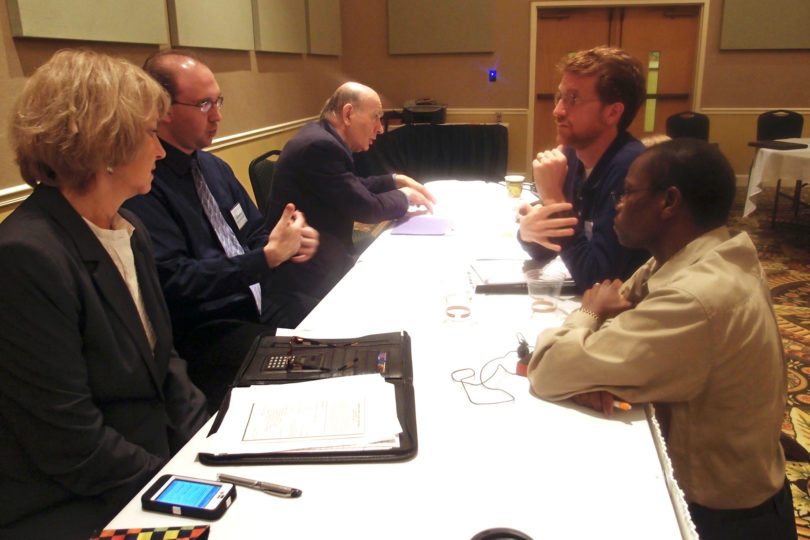More than 60 faculty members and administrators gathered to discuss “The Teaching/Research Nexus: Building Effective Bridges” at the 2012 Academic Affairs Faculty Symposium held at Unicoi State Park in late March.
Joe Broder, co-chair of the symposium planning committee, noted that the purpose of the annual gathering, held every year since 1991, is to “plant seeds.” Provost Jere Morehead said that various initiatives have come out of previous symposia.
“When faculty get to come together and have informed conversations, issues get addressed,” he said. “Things happen here that make a difference and advance the institution.”
The new Teaching Academy Fellows program and Instructional Innovation Grants program are two examples of ideas from the 2011 symposium that were subsequently implemented.
Speakers at this year’s event included Andrew Herod, Research Professor of Geography, and David Lee, vice president for research. Two panel discussions featured faculty who addressed models of integration and collaboration—ranging from summer research experiences to First-Year Odyssey seminars to the recently launched Obesity Initiative and UGA’s participation in the Center for the Integration of Research, Teaching and Learning network.
Symposium participants also discussed how to build bridges between teaching and research in breakout sessions that focused on undergraduate and graduate classes and curriculum, nontraditional learning environments, institutional structure, and faculty roles and rewards.
On the second day, each break out group presented a summary of their discussions, as well as recommendations that will be formally sent to the provost for consideration. These included bringing post-docs into the classroom, assigning courses to junior faculty that match their research interests, giving faculty release time to convert courses to an inquiry-based model, expanding the role of the Center for Teaching and Learning, providing support for lecturers to attend research conferences and creating a task force to investigate barriers to interdisciplinary teaching.
“The task now is to figure out how to operationalize good ideas,” Morehead said in concluding remarks. “But we’ll do our best to move many of these good ideas forward.”





